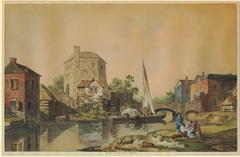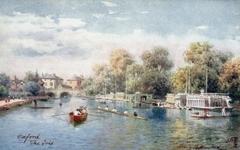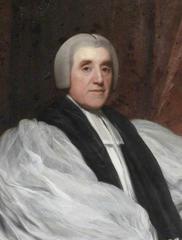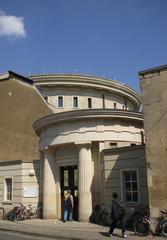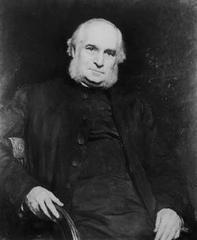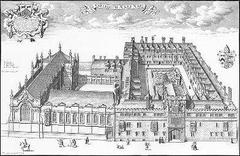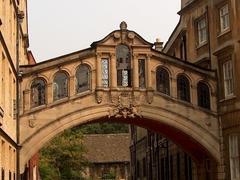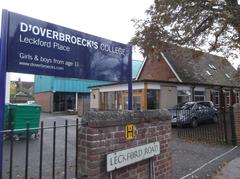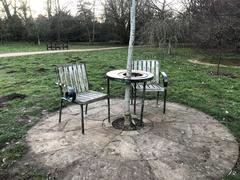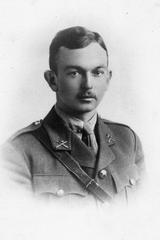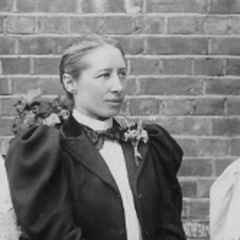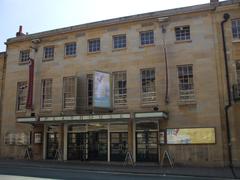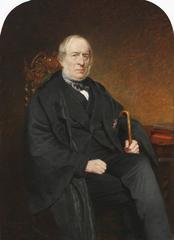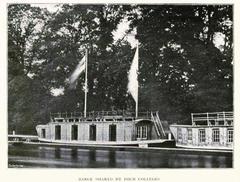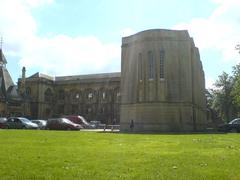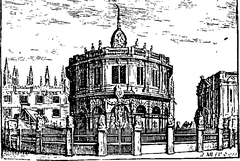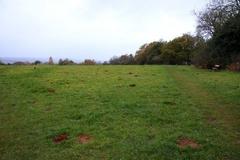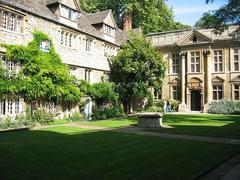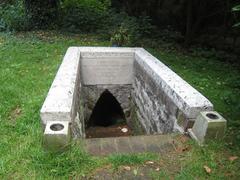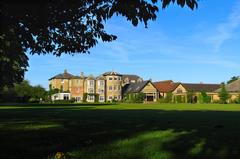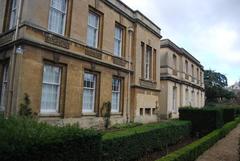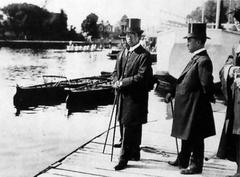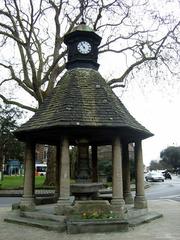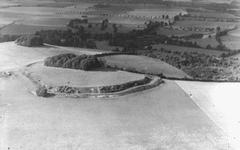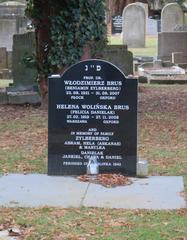
Comprehensive Guide to Visiting Folly Bridge, Oxford, United Kingdom
Date: 18/08/2024
Introduction
Folly Bridge in Oxford, United Kingdom, stands as a significant testament to the rich historical and cultural legacy of the city. This iconic stone bridge spans the River Thames and is renowned for its architectural beauty and historical significance. Notably, it is the site where Lewis Carroll first narrated the story that would become “Alice’s Adventures in Wonderland”. From its medieval origins to its role in modern-day Oxford, Folly Bridge offers a unique glimpse into the past while continuing to serve the community today. For history enthusiasts, architecture lovers, and casual visitors alike, Folly Bridge is a must-visit destination that encapsulates the essence of Oxford. The bridge has witnessed centuries of change, from its early construction in the 11th century by Robert d’Oilli to its 19th-century reconstruction by architect Ebenezer Perry. Its historical significance is further enriched by the various toll houses and economic activities that have shaped its role in the city’s development. Today, Folly Bridge remains a functional part of Oxford’s infrastructure while also serving as a cultural and historical landmark. Whether you’re interested in exploring its medieval origins, architectural evolution, or cultural impact, this guide provides a comprehensive overview of everything you need to know about visiting Folly Bridge. (Wikipedia, Urbs Travel, South Oxford History, Oxford History).
Table of Contents
- Introduction
- Medieval Origins
- 17th Century Developments: Thomas Welcome’s Folly
- Architectural Evolution in the 19th Century
- The Toll House and Economic Impact
- Cultural and Literary Significance
- Folly Island and Architectural Curiosities
- Visiting Information: Hours, Tickets, and Travel Tips
- Nearby Attractions and Modern Relevance
- Historical Preservation and Modern Use
- Folly Bridge in Popular Culture
- FAQ
- Conclusion
Exploring Folly Bridge, Oxford: History, Visiting Hours, and Nearby Attractions
Medieval Origins
Folly Bridge, located over the River Thames in Oxford, England, has a history dating back to medieval times. Originally, the site was a ford used for driving oxen across the Isis, the ancient name for the Thames in the Oxford area. The first known stone bridge on this site was constructed by Robert d’Oilli around 1085, although there is evidence suggesting a wooden bridge existed during the time of Ethelred of Wessex (Wikipedia).
17th Century Developments: Thomas Welcome’s Folly
In 1611, Thomas Waltham, also known as Thomas Welcome, added an extra floor to an existing guard tower on the 11th-century bridge. This newly enlarged building became known as Welcome’s Folly. The term “folly” in this context refers to an ornamental building with no practical purpose. Although the original tower no longer exists, the name Folly Bridge remains a tribute to Welcome’s project (Urbs Travel).
Architectural Evolution in the 19th Century
By the late 18th century, Folly Bridge had become decayed and too narrow to accommodate increasing traffic. An Act of Parliament in 1815 authorized its reconstruction. The current bridge was designed by London architect Ebenezer Perry and built between 1825 and 1827. The bridge features three rusticated stone arches and was constructed using Headington stone, with parapets made from stone sourced from the Forest of Dean. Ornate iron railings, designed by McIntosh of London, still adorn the bridge today (South Oxford History).
The Toll House and Economic Impact
In 1844, a toll-gate was installed on Folly Bridge to collect tolls from road users, helping to recoup the cost of rebuilding the bridge, which exceeded £19,000 (equivalent to £2.5 million today). The toll house, designed and built by James Gardiner, was erected at the north end of the bridge and cost £320. By 1845, the tolls were generating a profit of over £1,000 annually, compared to £300 a year without the station (Oxford History).
Cultural and Literary Significance
Folly Bridge has inspired numerous artists and writers over the centuries. Notably, the artist J.M.W. Turner painted Folly Bridge and Bacon’s Tower from an engraving when he was just twelve years old. Additionally, it was on a boating trip that began at Folly Bridge that Lewis Carroll first told the story that would become “Alice’s Adventures in Wonderland” (Urbs Travel).
Folly Island and Architectural Curiosities
Folly Island, a small stretch of land between the two banks of the river, is home to a castellated house adorned with statues and railings. This house was built in 1849 for the eccentric accountant Joseph Caudwell, possibly as a homage to Thomas Welcome’s original folly. The island and its unique architecture continue to attract sightseers and history enthusiasts (Urbs Travel).
Visiting Information: Hours, Tickets, and Travel Tips
Folly Bridge is accessible at all times, and there is no charge for visiting the bridge itself. However, certain nearby attractions and guided tours may have specific visiting hours and ticket prices. For those interested in a deeper exploration of Oxford’s historical sites, guided tours often include stops at Folly Bridge. It is advisable to check online or at local tourist information centers for the latest details on tickets and visiting hours.
Nearby Attractions and Modern Relevance
Folly Bridge is surrounded by numerous attractions that enhance its appeal as a tourist destination. The Bate Collection of Musical Instruments, located just 0.24 km from the bridge, houses over 2,000 historic musical instruments. Alice’s Shop, 0.25 km away, offers memorabilia related to “Alice in Wonderland.” Christ Church Meadow, a large park with beautiful gardens and meadows, is just 0.34 km from the bridge (Travalour).
Historical Preservation and Modern Use
Despite its historical significance, Folly Bridge remains a functional part of Oxford’s infrastructure. It continues to carry the Abingdon Road south from the center of Oxford, serving both pedestrians and vehicles. The bridge and its toll house are jointly Grade II listed, ensuring their preservation for future generations (Oxford History).
Folly Bridge in Popular Culture
Folly Bridge has also made appearances in literature and popular culture. The novel “Folly Bridge: A Romantic Tale” by David Leslie Murray, published in 1945, and the 1970 book “Last Boat to Folly Bridge” by sailor Eric C. Hiscock, both highlight the bridge’s romantic and historical allure (Wikipedia).
FAQ
What are the visiting hours for Folly Bridge? Folly Bridge is accessible at all times. However, nearby attractions may have specific visiting hours.
How much do Folly Bridge tickets cost? Visiting Folly Bridge itself is free, but some nearby attractions and guided tours may have ticket prices.
Are there guided tours available? Yes, several guided tours in Oxford include Folly Bridge as a stop. Check online or at local tourist information centers for details.
Is Folly Bridge accessible for people with disabilities? Folly Bridge is accessible, but certain areas may be challenging for people with disabilities. It’s advisable to check with local authorities for specific accessibility information.
Conclusion
In summary, Folly Bridge stands as a testament to Oxford’s rich history and cultural heritage. From its medieval origins to its 19th-century reconstruction, the bridge has played a significant role in the city’s development. Its architectural beauty, historical significance, and cultural impact make it a must-visit destination for anyone exploring Oxford. Whether you’re interested in history, architecture, or simply looking for a picturesque spot to enjoy the views, Folly Bridge offers something for everyone.
Ultimate Guide to Visiting Folly Bridge in Oxford: Tips, Tours, and More
Introduction
Situated in the heart of Oxford, Folly Bridge is not just a historical landmark but also a gateway to various exciting activities and scenic views. Whether you’re interested in boating, walking tours, or just relaxing by the River Thames, Folly Bridge has something to offer for everyone. In this guide, we provide you with essential tips, tour options, and practical advice to make the most out of your visit.
Getting There
Folly Bridge is conveniently located in central Oxford, making it easily accessible by various modes of transportation. If you are arriving by train, Oxford Railway Station is approximately a 20-minute walk from the bridge. Alternatively, you can take a bus or a taxi from the station. For those driving, there are several parking options nearby, including the Westgate Shopping Centre car park and the Oxpens car park.
Best Time to Visit
The best time to visit Folly Bridge is during the warmer months, from late spring to early autumn (May to September). During this period, the weather is generally pleasant, making it ideal for outdoor activities such as boating and walking along the river. However, Oxford can be busy with tourists during the summer, so visiting in the shoulder seasons (late spring and early autumn) can offer a more relaxed experience.
Boating and River Cruises
One of the highlights of visiting Folly Bridge is the opportunity to explore the River Thames by boat. Several companies offer various types of river cruises, each providing a unique experience. For a historical perspective, consider the Oxford Cruise with Edwardian River Launch, where a knowledgeable skipper will guide you through the history of Oxford. If you prefer a more leisurely experience, the Oxford Picnic Cruise offers a delicious picnic lunch catered by The Folly, featuring British finger sandwiches, scones with jam and clotted cream, and more.
For a quintessentially British experience, the Afternoon Tea Cruise is a must. This 1.5-hour cruise includes a traditional afternoon tea served aboard, with prices starting at £49 for adults and £35 for children. Advance booking is essential, and the cruise operates between March and November.
Walking Tours
Folly Bridge is a great starting point for several scenic walking tours. One popular route is the walk from Sandford Lock to Folly Bridge via Iffley Lock. This 3-mile walk takes you past river boats, flocks of grazing geese, and the college boathouses, offering picturesque views along the way. The section from Iffley Lock upstream is paved, making it accessible for most visitors. For more details on this walk, you can refer to Anita Mathias’ blog.
Punting
Punting is another popular activity in Oxford, and Folly Bridge is an excellent location to start your punting adventure. If you are new to punting, it is advisable to practice your technique before heading out. Position yourself at the rear end of the punt, partially facing a side of the boat, and hold the pole vertically aligned with the punt side. Relax your grip slightly to let the pole slip until it contacts the riverbed. For more detailed instructions, check out the Insider’s Oxford guide.
Dining Options
After a day of exploring, you might want to relax and enjoy a meal. The Folly Restaurant, located right at Folly Bridge, offers a variety of dining options, including a six-course tasting menu. For a more casual experience, you can opt for the Oxford Picnic Cruise, which includes a picnic lunch with classic British fare. If you prefer dining on land, there are several other restaurants and pubs nearby, such as The Head of the River, which offers traditional British cuisine with a view of the river.
Practical Tips
- Weather: Check the weather forecast before your visit. Oxford’s weather can be unpredictable, so it’s a good idea to bring an umbrella or a raincoat, especially if you plan to spend a lot of time outdoors.
- Footwear: Wear comfortable walking shoes, especially if you plan to explore the walking trails or go punting.
- Booking: Many of the river cruises and dining experiences require advance booking, so make sure to reserve your spot ahead of time.
- Safety: Always stay near the shore when boating and do not push yourself past your skill level. If you are new to punting, consider taking a guided tour to learn the basics.
- Local Etiquette: Be mindful of local customs and etiquette. Oxford is a historic city with many residents and students, so be respectful of private property and noise levels, especially in residential areas.
Visiting Hours and Tickets
Folly Bridge itself is open to the public 24/7, but the specific attractions and activities around it have varying hours. For instance, river cruises typically operate from March through November, with specific times depending on the company. It’s advisable to check the official websites or contact the service providers for the most accurate information. There are no tickets required to visit Folly Bridge itself, but activities like river cruises and dining experiences do require reservations and payments.
Nearby Attractions
While visiting Folly Bridge, you might also want to explore other nearby attractions. Christ Church College and Meadows are just a short walk away and offer beautiful gardens and historic buildings. The University of Oxford’s boathouses are also located nearby and are worth a visit, especially if you are interested in rowing. For more information on these attractions, you can refer to the Insider’s Oxford guide.
Special Events and Guided Tours
Throughout the year, various special events and guided tours are available that focus on the rich history and beauty of Folly Bridge and its surroundings. Make sure to check local listings or contact the Oxford Tourist Information Centre for the latest updates on events and guided tour options.
Photographic Spots
For photography enthusiasts, Folly Bridge offers several picturesque spots. The views along the River Thames, especially during sunrise or sunset, provide stunning backdrops. Don’t forget to capture the historic architecture and the serene river scenes for lasting memories.
FAQ
Q: What are the visiting hours for Folly Bridge? A: Folly Bridge is open to the public 24/7, but specific attractions and activities around it have varying hours.
Q: Do I need tickets to visit Folly Bridge? A: No tickets are needed to visit Folly Bridge itself, but activities like river cruises and dining experiences require reservations and payments.
Q: When is the best time to visit Folly Bridge? A: The best time to visit is from late spring to early autumn (May to September).
Q: What are the best nearby attractions? A: Christ Church College and Meadows, as well as the University of Oxford’s boathouses, are nearby attractions worth visiting.
Conclusion
In summary, Folly Bridge stands as a remarkable blend of history, architecture, and cultural significance. From its medieval origins to its 19th-century reconstruction, the bridge has played a pivotal role in the development and history of Oxford. It is not just a historical landmark but also a functional part of the city’s infrastructure, continuing to serve both pedestrians and vehicles. The bridge’s cultural and literary significance adds another layer of intrigue, making it a must-visit destination for anyone exploring Oxford. Whether you’re interested in its rich history, architectural beauty, or simply looking for a picturesque spot to enjoy the views, Folly Bridge offers something for everyone. Don’t miss the opportunity to explore this iconic landmark and its surrounding attractions, and make sure to check for guided tours and special events to enhance your visit. For more travel tips and updates, download our mobile app Audiala and follow us on social media. (Travalour, Insider’s Oxford, Oxford River Cruises, Anita Mathias’ blog).
References
- Wikipedia. (n.d.). Folly Bridge. Retrieved from Wikipedia
- Urbs Travel. (n.d.). History of Folly Bridge in Oxford. Retrieved from Urbs Travel
- South Oxford History. (n.d.). Folly Bridge. Retrieved from South Oxford History
- Oxford History. (n.d.). Toll House Folly Bridge. Retrieved from Oxford History
- Travalour. (n.d.). Folly Bridge. Retrieved from Travalour
- Insider’s Oxford. (n.d.). Boat Trips Oxford. Retrieved from Insider’s Oxford
- Oxford River Cruises. (n.d.). Afternoon Tea Cruise. Retrieved from Oxford River Cruises
- Mathias, A. (2013). River Walks on the Thames Path from Sandford Lock to Folly Bridge via Iffley Lock. Retrieved from Anita Mathias’ blog)
